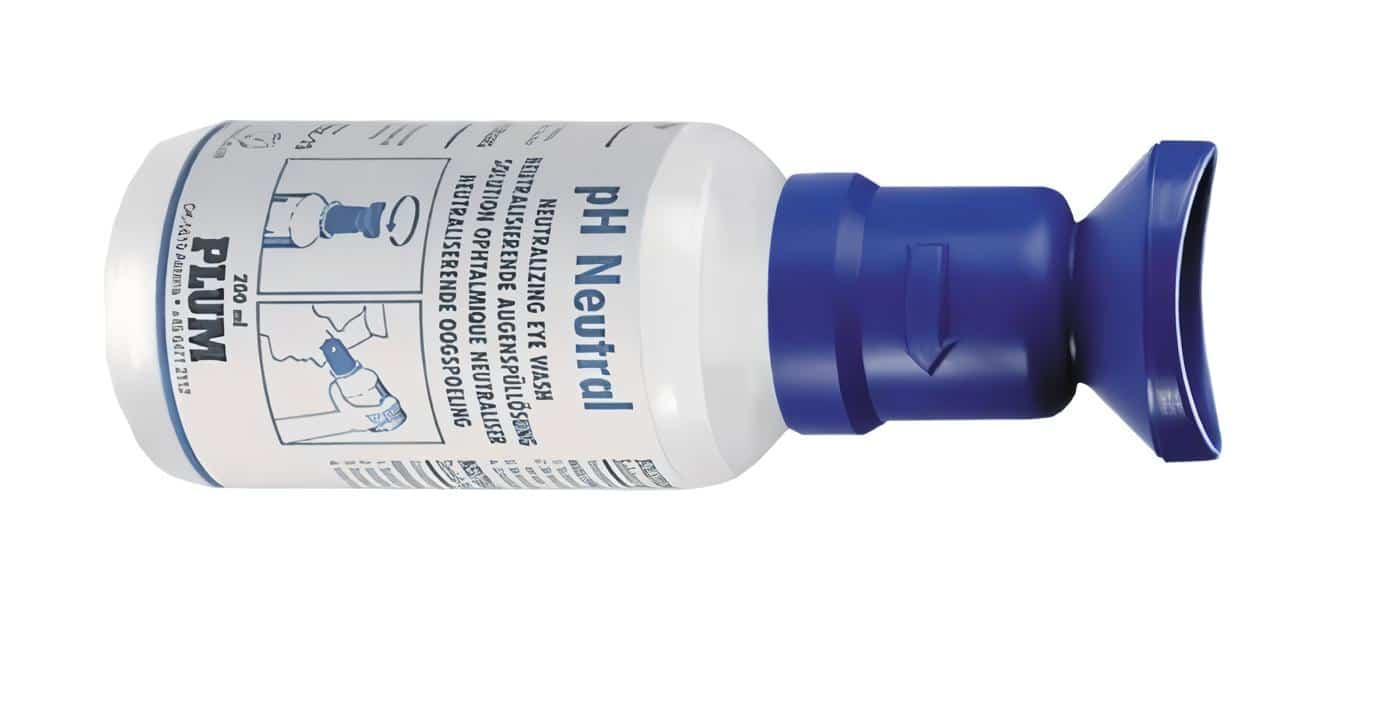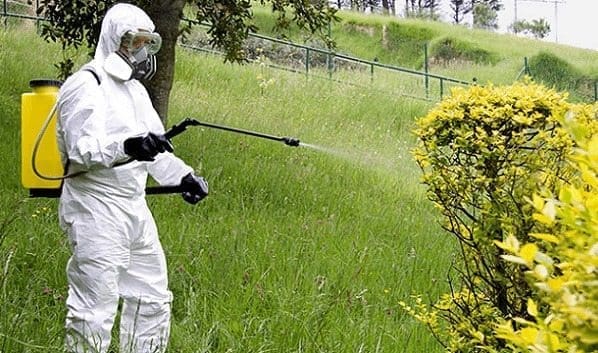1. ACGIH. TLVs and BEIs Threshold Limit Values, for chemical substances and Physical Agents. Biological Exposure Indices.2007.
2. ACGIH (Compiler) Guide to Occupational Exposure Values 2005.
3. ACGIH Ventilación Industrial 1ª Edición en español Generalitat Valenciana. España1992.
Ver: Apéndices para Trabajadores Expuestos a Benceno y sus Derivados
4. Agency for Toxic Substances and Disease Registry ATSDR. Toxicological profile for Benzene U.S. Department of Health and Human Services. Public Health Service. USA 1999.
5. Agency for Toxic Substances and Disease Registry ATSDR. Toxicological profile for Toluene U.S. Department of Health and Human Services. Public Health Service. USA 2000.
6. Agency for Toxic Substances and Disease Registry. ATSDR. Toxicological profile for Xilene U.S. Department of Health and Human Services. Public Health Service. USA 1995.
7. Agency for Toxic Substances and Disease Registry. ATSDR. Toxicological profile for Ethylbenzene U.S. Department of Health and Human Services. Public Health Service. USA 1999.
8. Alexopoulos ec, Chatzis C, Linos A. An analysis of factors that influence personal exposure to toluene and xylene in residents of Athens, Greece. BMC public health 2006;6:50.
9. Allen N, Mendell JR, Billmaier DJ, et al. Toxic polyneuropathy due to methylnbutyl ketone. An industrial outbreak. Arch Neurol 1975;32:209-18.
10. Altmann L, Neuhann HF, Kramer U, et al: Neurobehavioral and neurophysiological outcome of chronic low-level tetrachloroethene exposure measured in neighborhoods of dry cleaning shops. Environ Res 1995 May; 69(2): 83-9
11. Amador R, Lundberg I, Escalona E. Desarrollo de un cuestionario en castellano sobre síntomas neurotóxicos. Salud de los trabajadores. 1994;volumen 2 nº American Industrial Hygiene Association. A Strategy for Assessing and Managing Occupational Exposures. Third Edition. Fairfax. VA 22031. USA
12. Anon. Human aspects of solvent neurobehavioral effects. Neurotoxicology 1986;7:43-56.
13. Atchinson DA, Boziman KJ, Vingrys A. Quantitative scoring methods for d15 panel tests in the diagnosis of congenital color vision deficiencies. Optometry and vision science. 1991: 68(1): 41-48.
14. Bello J, López A, Fundamentos de Ciencia Toxicológica, Editorial Díaz de Santos, Madrid España 2001 Pp.255-270.
15. Beverly S. Cohen and Susanne V. Hering (Editors). Air Sampling Instruments. Chapter 2: Occupational Air Sampling Strategies by Rock James C., 8th Edition, ACGIH, Cincinnati, Ohio, EE.UU. 1995.
16. Bleecker margit l. Neurotoxicology: an overview. Center occupational and environmental neurology. 1995.
17. Bolla K, Roca R: Neuropsychiatric sequelae of occupational exposure to neurotoxins. In: Bleeker ML, Hansen JA, eds. Occupational Neurology and Clinical Neurotoxicology. Baltimore, MD: Lippincott Williams and Wilkins; 1994.
18. Broadwell DK, Darcey DJ, Hudnell HK, et al: Work-site clinical and neurobehavioral assessment of solvent-exposed microelectronics workers. Am J Ind Med 1995 May; 27(5): 677-98.
19. Brouwer DH, de Pater NA, Zomer C, Lurvink MW, van Hemmen JJ. An experimental study to investigate the feasibility to classify paints according to neurotoxicological risks: occupational air requirement (OAR) and indoor use of alkyd paints. Ann Occup Hyg. 2005 Jul; 49(5):443-51. Epub 2005 Mar 24.
20. Brown EA, Shelley ML, Fisher JW. A pharmacokinetic study of occupational and environmental benzene exposure with regard to gender Risk Anal. 1998 Apr;18(2):205-213.
21. Brugnone F, Perbellini L, Romeo L, Bianchin M, Tonello A, Pianalto G, Zambon D. Benzene in environmental air and human blood. Int Arch Occup Environ Health.1998; 71: 554-559.
22. Bullock W, Ignacio J, A strategy for assessing and managing occupational exposures. AIHA Third Edition. Virginia, EEUU. 2006.
23. Cassarett and Doull`s Toxocology, Quinta edición. Edit Mc.Graw Hill, U.S.A. 1996. Pp.643-690, 737-773.
24. Chang F, Chen M, Cheng S, Shih T, Mao I. Protective suits and gloves evaluated by biomonitoring. Occup. Environ. Med. 2007;64;759-762.
25. Chang F, Chen M, Sheng S, Shii T, Mao I. Dermal Absorption of Solvents as a Major Source of Exposure Among Shipyard Spray Painters. J Occup Environ Med. 2007;49:430 – 436.
26. Chen R, Semple S, Dick F, et al. Nasal, eye, and skin irritation in dockyard painters. Occup Environ Med 2001; 58:542-3.
27. Chiara S, Silvano F, Bruno P. Environmental and biological monitoring of occupational exposure to organic micropollutans in gasoline. Chemosfere 2001; 44: 67-82.
28. Chouaniere D, Wild P, Fontana JM, Hery M, Fournier M, Subra I. Neurobehavioral disturbances arising from occupational toluene exposure. Am j ind med 2002 feb; 41(2):77-88.
29. Cohen B S; Hering S V (Eds) Air Sampling Instruments for Evaluation of Atmospheric Contaminants. 8th Ed. Part I The Measurement Process Part II Instrumentation ACGIH USA 1995.
30. Colman R, Coleman A. Unexpected cause of raised benzene absorption in coke oven by-product workers. SO – Occup Med (Lond) 2006 Jun;56(4):269-271
31. Colton CE. The occupational environment Its evaluation and control respiratory protection. AIHA USA 1998.
32. Corsi G, Maestrelli P, Picotti G, et al: Chronic peripheral neuropathy in workers with previous exposure to carbon disulphide. Br J Ind Med 1983 May; 40(2): 209-11.
33. Decreto 1274 por el cual se promulga el Convenio 136 de la OIT relativo a la protección contra los riesgos de intoxicación por el Benceno. Diario Oficial 43069. Colombia 1997.
34. Deschamps D., Garnier R., Lille F., et al. Evoked Pot. and cerebral blood flow insolvent induced psycho-organic syndrome Br- J. Ind. Med. 50 (4), 1993.
35. Deschamps D, Geraud C, Dally S. Cognitive funtions in workers exposed to toluene- Int. Arch. Occup Environ Health. 2001; 74:285-288.
36. Dick F, Semple S, Osborne A, et al. Organic solvent exposure, genes, and risk of neuropsychological impairment. QJM 2002;95:379-87.
37. Edling C, Ekberg K, Ahlborg G Jr, et al. Long-term follow up of workers exposed to solvents. Br J Ind Med 1990; 47:75-82.
38. Eller N, Netterstrom B, Laursen P. Risk of chronic effects on the central nervous system at low toluene exposure. Occup. Med. 1999; 49 (6): 389-395.
39. Espinosa M.T., M.P. Rojas, M.L. Bernal, A. Araque, M. Vélez, J.M. López. Manual de agentes carcinógenos, de los grupos 1 y 2 A de la IARC, de interés ocupacional para Colombia. Ministerio de la Protección Social. Instituto Nacional de Cancerología. Colombia. 2006.
40. Eun-hee L. Acquired dyschromatopsia among petrochemical industry workers exposed to benzene. Neurotoxicology 28 (2007) 356-363.
41. Feldman RG, Ratner MH, Ptak T: Chronic toxic encephalopathy in a painter exposed to mixed solvents. Environ Health Perspect 1999 May; 107(5): 417-22.
42. Freed DM, Kandel E: Long-term occupational exposure and the diagnosis of dementia. Neurotoxicology 1988 Fall; 9(3): 391-400.
43. Fuente A, Mcpherson B. Organic solvents and hearing loss: the challenge for audiology. Int j audiol 2006 jul;45(7):367-381.
44. Fontenot AP, Pelak VS: Development of neurologic symptoms in a 26-year-old woman following recovery from methanol intoxication. Chest 2002 Oct; 122(4): 1436-9.
45. Gestis-Analytical Methods for Chemical Agents at Workplaces. EU Project BC/CEN/ENTR/000/2002-16):https://www.hvbg.de/e/bia/gestis/analytical_methods/indexl.
46. GESTIS International Limit Values. BG-Institute for Occupational Safety and Health – BGIA. 2007 Versión electrónica: https://www.hvbg.de/e/bia/gestis/limit_values/indexl.
47. Gobba F. Color vision: a sensitive indicator of exposure to neurotoxins. Neurotoxicology 2000 oct;21(5):857-862.
48. Greenberg M.M. The central nervous system and exposure to toluene: a risk characterization Environ Res 1997 Jan; 72(1):1-7.
49. Gregersen P. Neurotoxic effects of organic solvents in exposed workers: two controlled follow-up studies after 5.5 and 10.6 years. Am J Ind Med 1988; 14:681-701.
50. Guide for the adjustment of permisible exposure values (PEVs) for inusual work Schedules 2nd edition revised and updated Studies and research projects Technical Guide Institut de Recherché Robert-Sauvé en Santé et en Sécurité du Travail. IRSST Québec canadá 2004. Páginas web: www.irsst.qc.ca y https://www.irsst.qc.ca/en/_outil_100011l.
51. Hanna R. Six interaction profiles for simple mixtures. Chemosphere. 2003; 53: 183-197.
52. Herskowitz A, Ishii N, Schaumburg H. N-hexane neuropathy. A syndrome occurring as a result of industrial exposure. N Engl J Med 1971;285:82-5.
53. Hogstedt C., Lundberg L. Epidemiology of occupat neurobehav. Liozards. Methodological experiences from organic solvent research. Rev. Epidemiol. Sante Publique 40, Sppl. 1, 1992.
54. IARC (1987). Monographs on the evaluation of carcinogenic risks to humans. Overall evaluations of carcinogenicity: An updating of IARC Monographs Volumes 1 to 42. Supplement 7. IARC
55. IARC. International Agency for Research on Cancer. Monographs on the evaluation of Carcinogenic Risks to Humans. Vol. 29, Suppl. 7, 1987.
56. IARC International Agency for Research on Cancer. Monographs on the evaluation of carcinogenic risks to humans Occupational Exposures in Petroleum Refining; Crude Oil and Major Petroleum Fuels. Lyon: IARC; 1989; Vol. 45, pág 159.
57. IARC International Agency for Research on Cancer. Monographs on the evaluation of carcinogenic risks to humans. Some Organic Solvents, Resin Monomers and Related Compounds, Pigments and Occupational Exposures in Paint Manufacture and Painting. Lyon: IARC; 1989; Vol. 47, pág 43.
58. Ikeda M. Exposure to complex mixture: Implications for biological monitoring Toxicology letters 1995; 77: 85-91.
59. INSHT. Agencia Europea para la seguridad y la salud en el trabajo. Fichas y notas prácticas. Facts 35: La comunicación de la información relativa a la sustancias peligrosas. ISSN 1681-2085. Bélgica. 2003 https://www.mtas.es/insht/information/fichasprac#np_efp_hig.
60. INSHT Instituto Nacional de Seguridad e Higiene en el Trabajo. Guía técnica para la evaluación y prevención de los riesgos presentes en los lugares de trabajo relacionados con agentes químicos. Ministerio de trabajo y asuntos sociales España. 2003. Versión electrónica: www.mtas.es/insht/practice/g_AQ.
61. INSHT Instituto Nacional de Seguridad e Higiene en el Trabajo. Ministerio de trabajo y asuntos sociales. Métodos de mediciones para agentes químicos. Apéndice 5. Guía técnica para la evaluación y prevención de los riesgos presentes en los lugares de trabajo relacionados con agentes químicos. España. 2003. Versión electrónica: www.mtas.es/insht/practice/g_AQ.
62. INSTH. Tubos colorimétricos. Métodos de toma de muestras y análisis de contaminantes químicos en el aire (MTCQA-e). España. 2000. Versión electrónicahttps://www.mtas.es/insht/MCQA/index.
63. INSHT Instituto Nacional de Seguridad e Higiene en el Trabajo. Límites de exposición profesional para agentes químicos. Ministerio de trabajo y asuntos sociales. España 2007. Versión electrónica. https://www.mtas.es/insht/practice/vlas.
64. INSHT NTP 748: Guantes de protección contra productos químicos. Instituto Nacional de Seguridad e Higiene en el Trabajo. Ministerio de trabajo y asuntos sociales. España. 2003. Versión electrónica: www.mtas.es/insht/ntp/ntp_748.
65. International labor office (ILO). International chemical control Toolkit Implementado en 2004. Ginebra. Suiza. Versión electrónica: https://www.ilo.org/public/english/protection/safework/ctrl_banding/toolkit/main_guide.pdf.
66. Javelaud B, Vian L, Molle R, Allain P, Allemand B, Andre B, Barbier F. Benzene exposure in car mechanics and road tanker drivers. Int Arch Occup Environ Health. 1998; 71: 277-283
67. Jewett, D., Head. G, and Chimento, T. Pheripheral neurotoxicity testing by pairs of stimuli. Neurobehav. Toxicol. and Teratol vol 7(4), 1985.
68. Jovanic JM, Jovanovich MM, Spasic MJ: Peripheral nerve conduction study in workers exposed to a mixture of organic solvents in the paint and lacquer industry. Croat Med J 2004; 45: 769-74.
69. Kramer A y otros, Occupational chronic exposure to organic solvents XVII. Ambient and biological monitoring of workers exposed to xylenes. Int Arch Occup Environ Health (1999) 72: 52-55
70. Krarup, C. and Buchoul. F. Conduction studies in pheripheral nerve. Neurobehav. Toxicol. and Teratol vol 7(4), 1985.
71. Kukull WA, Larson EB, Bowen JD, McCormick WC, Teri L, Pfanschmidt ML, Thompson JD, O’Meara ES, Brenner DE, van Belle G. Solvent exposure as a risk factor for Alzheimer’s disease: a case-control study. Am J Epidemiol. 1995 Jun 1;141(11):1059-71.
72. LaDou J. MEDICINA LABORAL, Edit. Manual Moderno, cuarta reimpresión de Primera Edición, México 1998. Edición en ingles 2006.
73. Leung, Hon-Wing and Paustenbach, Dennis J. Application of Pharmacokinetics to Derive Biological Exposure Indexes from Threshold Limit Values, American Industrial Hygiene Association Journal, 49:9, 445- 450 1988.
74. Ley 55 de 1993. Convenio sobre la seguridad en la utilización de los productos químicos en el trabajo. Diario oficial año CXXIX. N.40936.6 Julio. Santafé de Bogotá D.C.1993.
75. Lomax RB, Ridgway P, Meldrum M. Does occupational exposure to organic solvents affect colour discrimination? Toxicol rev 2004;23(2):91-121.
76. Lorenzo P, Ladero JM, Leza JC. Drogodependencias. Editorial Médica panamericana. Madrid – España 1998.
77. Longstreth WT: Central nervous system disorders, neurological and psychological disorders. In: Rosenstock L, Cullen MR, eds. Textbook of Clinical, Occupational and Environmental Medicine. Philadelphia, PA: WB Saunders; 1994.
78. Manini P, Andreoli R, Poli D, Mozzoni P, Folesani G, Mutti A, Apostoli P. Environmental and biological monitoring of benzene exposure in a cohort of Italian taxi drivers. Toxicology Letters. 2006; 167: 142-151.
79. Masayuki Ikeda. Exposure to complex mixtures: implications for biological monitoring. Toxicology Letters.1995; 77: 85-91.
80. Mayor Ríos, J. Efectos de los solventes orgánicos sobre el sistema nervioso. Los métodos neurológicos. Salud de los Trabajadores. 1995: 3(2) 107-115.
81. Mayor J, Saiz J, Eimil E, et al. Efectos Sobre El Sistema Nervioso de la Exposición Potencial a Solventes Orgánicos Instituto de los Seguros Sociales. Cali Colombia 1997.
82. Mergler Donna. Capítulo 7: Sistema nervioso. Agentes químicos neurotóxicos. Parte I. Volumen I Enciclopedia de salud y seguridad en el trabajo. © Copyright de la edición española, Ministerio de Trabajo y Asuntos Sociales, 2001. Versión electrónica: https://www.mtas.es/insht/EncOIT/Index.
83. Mergler D, Blain L, Lagacé JP. Solvent related colour vision loss: an indicator of neural damage? Int arch occup environ health. 1987; 59: 313-321.
84. Mergler D, Bélanger S, De grosbois S, Vachon N. Chromal focus of acquired chromatic discrimination loss and solvent exposure among printshop workers. Toxicology. 1988; 49: 341-348.
85. Ministerio de la Protección Social. Guía de Atención Integral Basada en la Evidencia para Neumoconiosis (Silicosis, Neumoconiosis del minero de carbón y Asbestosis). Bogotá. Colombia. 2006.
86. Ministerio de la Protección Social. Manual Guía sobre Procedimientos para la Rehabilitación y Reincorporación Ocupacional de los Trabajadores en Sistema General de Riesgos Profesionales. Bogotá: La Entidad, 2004.
87. Ministerio de trabajo y asuntos sociales de España. Los disolventes y la salud. Riesgos y prevención. Folletos y documentos breves. Higiene industrial. Versión electrónica. https://www.mtas.es//insht/practice/f_disol.
88. Mirkova E, Antov G, Zaikov K, Ganchovska V. Evaluation of inhalation toxicity of organic solvent xylene in pregnant rats. Probl Khig. 1982; 7:60-67.
89. Montoya, M.A. Neurotoxicology in México and its relations to the general and work. Environment Ins Advances in Neurobehav. Toxicol. 1990.
90. National Institute Occupational Safety and Health (NIOSH). ORGANIC SOLVENT Neurotoxicity, en Current Intelligence Bulletin 48. Marzo 1987.
91. National institute on drug abuse. Assessing neurotoxicity of drugs of abuse. U.S. department of health and human services. Public health service. Rockville,1993
92. Nilson LN, Sallsten G, Hagberg S, et al. Influence of solvent exposure and aging on cognitive functioning: an 18 year follow up of formerly exposed floor layers and their controls. Occup Environ Med 2002;59:49-57.
93. National Institute for Occupational Safety and Health. NIOSH Respirator selection logic 2004. Versión electrónica: https://www.cdc.gov/niosh/docs/2005-100/chapter2l#chapt2a.
94. National Institute for Occupational Safety and Health. NIOSH. Hydrocarbons, Aromatic. Method 1501 March 2003 Manual of Analytical Methods (NMAM), Fourth Edition. Versión electrónica: https://www.cdc.gov/niosh/nmam/pdfs/1501_pdf
95. National Institute for Occupational Safety and Health. NIOSH Pocket Guide to Chemical Hazards. 2005. Versión electrónica https://www.cdc.gov/niosh/npg/defaultl. Benceno: https://www.cdc.gov/niosh/npg/npgd0049l.
96. National Institute for Occupational Safety and Health. NIOSH Pocket Guide to Chemical Hazards. Recommendations for Chemical Protective Clothing A Companion to the 1998. version electrónica: https://www.cdc.gov/niosh/prot-cloth/ncpc1l.
97. National Institute for Occupational Safety and Health. NIOSH 2003. Method 8301. Manual of Analytical Methods (NMAM), Fourth Edition. Versión electrónica: https://www.cdc.gov/niosh/nmam/pdfs.
98. Neurobehavioral assessment of occupationally relevant solvents and chemicals in humans. In: Chang LW, ed. Handbook of Neurotoxicology. New York, NY: Marcel Dekker; 1995.
99. NU. Naciones Unidas. Sistema Globalmente Armonizado de clasificación y etiquetado de productos químicos (SGA), Nueva York y Ginebra 2005. Versión electrónica.https://www.unece.org/trans/danger/publi/ghs/ghs_rev01/Spanish/00-intro-sp.pdf.
100. Organización Internacional del trabajo OIT. Guía de productos químicos. Hidrocarburos aromáticos. Enciclopedia de salud y seguridad en el trabajo. Volumen IV Parte XVIII. Capítulo 104 Guía 6. Versión electrónica. Copyright de la edición española. Ministerio de trabajo y asuntos sociales, 2001, 2004. España. https://www.mtas.es/insht/EncOIT/Index.
101. Organización Internacional del trabajo. OIT 2003. Módulo 6: Disolventes. Módulos de formación en seguridad química. Centro internacional de información sobre seguridad y salud en el trabajo (CIS). Actualización Mayo 2003. Versión electrónica: www.ilo.org/public/spanish/protection/safework/cis/products/safetytm/solvents.
102. Organización Internacional del trabajo. OIT Convenio 139. Convenio sobre la prevención y control de los riesgos profesionales causados por las sustancias o agentes cancerígenos. Ginebra1976.
103. Organización internacional del trabajo, enciclopedia de la salud y seguridad social en el trabajo, 2004. Cap. 7-30-33-104.
104. Olson K, Becker C, Benowitz N, et al POISONING AND DRUG OVERDOSE, Edit Appleton and Lange, Norwlk, San Francisco U.S.A. 1995.
105. Orbaeck, P. Effects of long – term exposure to organic solvents on the nervous system. Chronic toxic encephalopathy and the prognosis following cessation to exposure thesis, Lund 1987.
106. OSHA. Regulations Standars-29CFR1910-134 Respiratory requirements for selected chemicals U.S. Department labor. USA.
107. OSHA. Ocuppational safety and health standards regulations 29 CFR 1910.1028 for Benzene – U.S. Department labor. USA. Dirección electrónica: www.osha.gov/pls/oshaweb/owadisp.show_document?p_table=STANDARDS&p_i
108. OSHA Final rule on assigned protection respirators factors USA 2006. Dirección electrónica: https://usachppm.apgea.army.mil/Documents/FACT/55-011-1106-Assigned_Protection_Respirators_Factors.pdf.
109. Panida M, y otros. Environmental and occupational exposure to benzene in Thailand. Chemico-Biological Interactions 153-154 (2005) 75-83.
110. Passero S, Battistini N, Cioni R, et al. Toxic polyneuropathy of shoe workers in Italy. A clinical, neurophysiological and follow-up study. Ital J Neurol Sci 1983;4:463-72.
111. Perkins JL, Ming-Jia You. Predicting temperature effects on Chemical Protective Clothing Permeation AIHA Journal 53(2):77-83 (1992).
112. Pohl H.R., Roney N., Wilbur S., Hansen H., De Rosa C.T. Six interaction profiles for simple mixtures Chemosphere 2003; 53:183-197.
113. Popendorf W. Industrial Hygiene Control of Airborne Chemical Hazards. Taylor & Francis. Boca Raton, FL 33487-2742 USA. 2006.
114. Poungravin N. Multifocal brain damage due to lacquer souffing: The first case report of Thailand. J. Med. Ass. Thai. 74 (7), 1991.
115. Repetto M, Toxicologia fundamental, Tercera Edición, Editorial Díaz de Santos, Madrid España 1997 Pp. 166-186.
116. Rosenberg J, Katz EA. Solvents. In: LaDou J, editor. Current Occupational & Environmental Medicine. Fourth Ed. McGraw-Hill Companies; 2007. p. 481-514.
117. Rosenberg NL: Neurotoxicity of organic solvents. In: Rosenberg NL, ed. Occupational and Environmental Neurology. Boston, MA: Butterworth-Heinman; 1995.
118. Rock JC. Air Sampling Instruments. Chapter 2: In Cohen BS, Hering SV, Editors. Occupational Air Sampling Strategies. 8th Ed., Cincinnati, Ohio. E.E.U.U. ACGIH.
1995.
119. Romieu I y otros, Environmental Exposure to Volatile Organic Compounds among Workers in Mexico City as Assessed by Personal Monitors and Blood Concentrations. Environmental Health Perspectives Volume 107, Number 7, July 1999.
120. Rosenberg NL: Neurotoxicity of organic solvents. In: Rosenberg NL, ed. Occupational and Environmental Neurology. Boston, MA: Butterworth-Heinman; 1995.
121. Ruijten MW, Hooisma J, Brons JT, et al: Neurobehavioral effects of long-term exposure to xylene and mixed organic solvents in shipyard spray painters. Neurotoxicology 1994 Fall; 15(3): 613-20.
122. Rutchik, Jonathan S. Organic Solvents. Instant Access to the Minds of Medicine. University of California San Francisco. 2002.
123. Schaper M, Demes P, Zupanic M, Blaszkewicz M,Seeber A. Occupational toluene exposure and auditory function: Results from a follow-up study. Ann occup hyg 2003 aug;47(6):493-502.
124. Seppalainen AM, Raitta C, Huuskonen MS: n-Hexane-induced changes in visual evoked potentials and electroretinograms of industrial workers. Electroencephalogr Clin Neurophysiol 1979 Oct; 47(4): 492-8.
125. Seppalainen AM, Husman K, Martenson C: Neurophysiological effects of long-term exposure to a mixture of organic solvents. Scand J Work Environ Health 1978 Dec; 4(4): 304
126. Seppalainen AM, Antti-Poika M: Time course of electrophysiological findings for patients with solvent poisoning. A descriptive study. Scand J Work Environ Health 1983 Feb; 9(1): 15-24.
127. Seppalainen AM, Laine A, Salmi T, et al: Electroencephalographic findings during experimental human exposure to m-xylene. Arch Environ Health 1991 Jan-Feb; 46(1): 16-24.
128. Sinclair GC, Westerb RC, Maibachb HI. Partition Coefficients for Benzene in Human Skin AIHA Journal 63:685-688 (2002).
129. Silva F. Uso racional de métodos diagnósticos en neurología. Guía neurológica Asociación colombiana de neurología. 15.01.2005.
130. Sliwinska-Kowalska M, Zamyslowska-Szmytke E, Szymczak W, Kotylo P, Fiszer M, Dudarewicz A, Wesolowski W. Hearing loss among workers exposed to moderate concentrations of solvents. Scand j work environ health 2001 oct;27(5):335-342.
131. Spencer PS, Schaumburg HH, ORGANIC SOLVENT NEUROTOXICITY. Scan J WorkEnviron Health, 1985 :11 suppl 1:53-60.
132. Spurgeon A. The validity and interpretation of neurobehavioral data obtained in studies to investigate the neurotoxic effects of occupational exposure to mixtures of organic solvents. Sudbury: HSE Books, 2001.
133. Seong Kyu-kan, y otros Occupational exposure to benzene in South Korea. Chemico-Biological Interactions 153-154 (2005) 65-74.
134. Talty JT (Ed) Industrial Hygiene Engineering Second Edition NIOSH USA1986.
135. Therapeutics and Technology Assessment Subcommittee of the American Academy of: Neuropsychological testing of adults. Considerations for neurologists. Report of the Therapeutics and Technology Assessment Subcommittee of the American Academy of Neurology. Neurology 1996 Aug; 47(2): 592-9.
136. Tolentino, Zenari E, Dall’Olio M, Ruani G, Gelormini A, Mirone G. Application of statistical models to estimate the correlation between urinary benzene as biological indicator of exposure and air concentrations determined by personal monitoring. AIHA J (Fairfax , Va) 2003 Sep;64(5):625-629.
137. Triebig G, Hallermann J. Survey of solvent related chronic encephalopathy as an occupational disease in European countries. Occup Environ Med 2001; 58:575-81.
138. Uribe M, Neurotoxicología, Asociación Colombiana de Neurología. Editorial LER S.A, Bogotá 2001 Págs. 117-142.
139. U.S. Occupational Safety & Health Administration (OSHA) Sampling and Analytical Methods https://www.osha.gov/dts/sltc/methods/indexl.
140. Vahdat N.; Delaney R. Decontamination of Chemical Protective Clothing’, American Industrial Hygiene Association Journal 50:3, 152 – 156(1989).
141. Valic E, Waldhor T, Konnaris C, Michitsch A, Wolf C. Acquired dyschromatopsia in combined exposure to solvents and alcohol. Am j ind med 1998 mar;33(3):297-304
142. Verma D. K; Karen des Tombe Measurement of benzene in the workplace and its evolution process, part 1 American Industrial Hygiene Association Journal; Jan/Feb 1999; 60, 1; ABI/INFORM Global pp. 38.
143. Vincent R, Bonthoux F, Mallet G, Iparraguirre JF, Rio S. Methodologie d’evaluation simplifiée du risqué chimique. INRS Hygiéne et sécurité du travail. Cahiers de notes documentaires;2005. 200:39-62.
144. WHO/IPCS/ILO. Fichas internacionales de seguridad química para Benceno., tolueno. Etilbenceno y (o, m, p)-Xileno. 1994 Versión electrónica: https://www.mtas.es/insht/ipcsnspn/nspn 0015/0078/ 0268/ 0084/0085/0086 ftm.
145. White RF, Proctor SP. Solvents and neurotoxicity. Lancet 1997; 349:1239-43.
146. White RF, Proctor SP: Clinic-neuropsychological assessment methods in behavioral neurotoxicology. In: Chang L, ed. Neurotoxicology: Approaches and Methods. San Diego, CA: Academic Press; 1995.
147. Xiao, Q., Levin, S. M. The Diagnosis and Management of Solvent-Related Disorders American Journal of Industrial Medicine 37:44±61 (2000).
148. Zavalic M, Mandic Z, Turk R, Bogadi-Sare A, Plavec D, Skender LJ. Qualitative color vision impairment in toluene-exposed workers. Int arch occup environ health 1998 may;71(3):194-200







